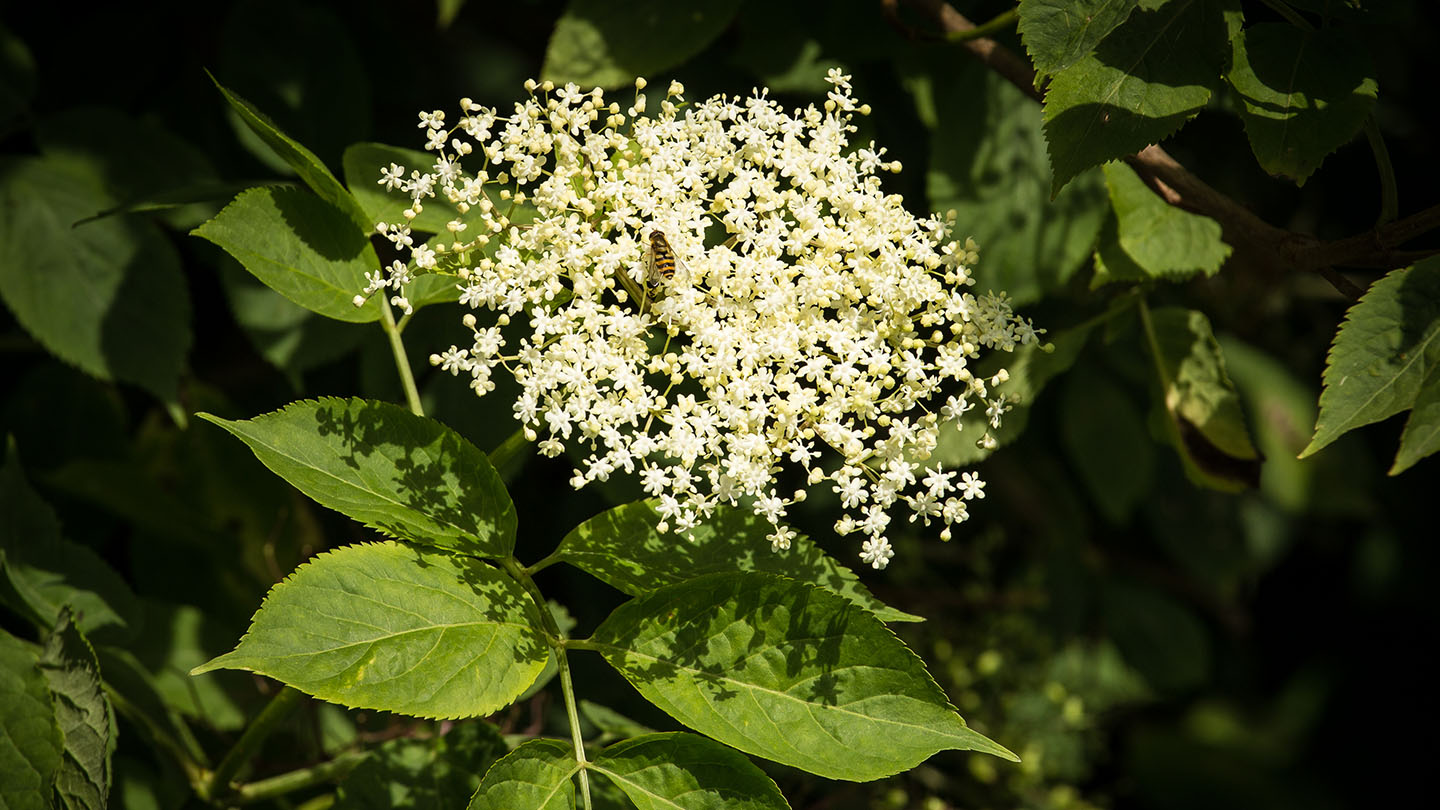The elder tree, scientifically known as Sambucus nigra, is a versatile and fascinating plant with a long history of use in both medicinal and culinary practices. Native to Europe and parts of Asia, it has been revered for centuries for its numerous benefits and its association with folklore and magic.
The elder tree is a deciduous shrub or small tree that can grow up to 15 meters tall. It is characterized by its dark green, pinnate leaves and large clusters of creamy-white flowers that bloom in late spring. The flowers give way to dark purple-black berries in late summer.

Elder trees are relatively easy to grow and thrive in a variety of soil conditions. They prefer full sun but can tolerate partial shade. They are fast-growing and can quickly establish themselves in a garden or landscape. Regular pruning is recommended to maintain their shape and encourage healthy growth.
The elder tree has a long history of use in traditional medicine. Various parts of the plant, including the flowers, berries, and leaves, have been used to treat a wide range of ailments. Elderflower tea is a popular remedy for colds and flu, while elderberry syrup is often used to boost the immune system.
Folklore and Magic

The elder tree holds a special place in folklore and mythology. It has been associated with both protection and danger. In some traditions, it is believed that harming an elder tree can bring misfortune. However, it is also seen as a symbol of healing and wisdom.
Culinary Uses
The elder tree is a valuable resource for culinary purposes. The flowers can be used to make delicious cordials, syrups, and teas. The berries can be used to make jams, jellies, and wines. They are also a popular ingredient in pies and cakes.
Wildlife Benefits
The elder tree provides valuable habitat and food for a variety of wildlife. The flowers attract pollinators such as bees and butterflies, while the berries are a favorite food source for birds.
Harvesting and Preparation
When harvesting elderflowers, it is important to choose a dry day and avoid picking them when they are wet. The flowers should be picked in the morning when they are fully open. Elderberries can be harvested in late summer or early autumn when they are fully ripe.
Safety Considerations

While the elder tree has many benefits, it is important to use it with caution. The raw leaves, stems, and seeds of the elder tree contain toxic compounds. It is essential to cook or process the plant parts before consumption.
Common Questions and Answers
A: No, it is not recommended to eat the raw berries of the elder tree. They contain toxic compounds that can cause nausea, vomiting, and diarrhea.
A: While elderberry syrup is generally safe for most people, it may cause mild side effects such as diarrhea or upset stomach in some individuals.
A: Yes, you can plant an elder tree near your house. However, it is important to choose a location that is not too close to your foundation, as the roots can become invasive.
The elder tree is a remarkable plant with a rich history and a wide range of uses. Whether you are interested in its medicinal properties, its culinary potential, or its ecological importance, the elder tree is a fascinating subject to explore. By understanding and appreciating this versatile plant, we can harness its benefits and contribute to its conservation.





:max_bytes(150000):strip_icc()/star-of-bethlehem-plant-profile-4774326-hero-943e35e2dc3049b1b2baa110d5fa0e71.jpg?w=200&resize=200,112&ssl=1)
